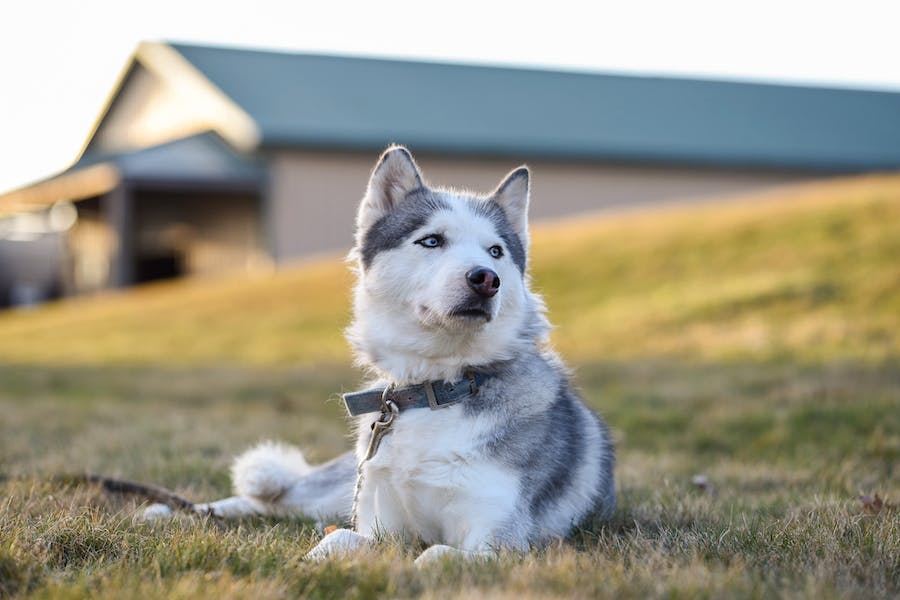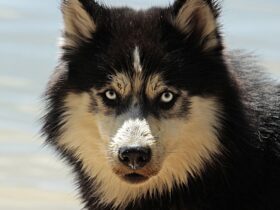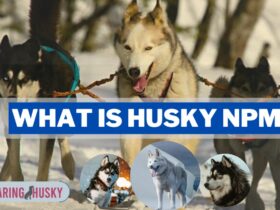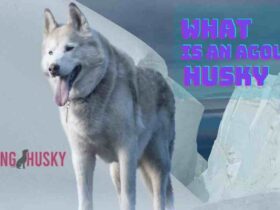With their striking eyes and exuberant personalities, Huskies are more than just beautiful dogs; they are creatures of complexity and joy. This article delves into the heart of what huskies love most, unraveling the tapestry of their desires ranging from their insatiable appetite for exercise to their deep need for companionship and mental stimulation. Join us as we explore the fascinating world of huskies and discover what truly makes them happiest.
What Do Huskies Love the Most?”
Huskies, known for their energetic and playful nature, thrive on physical activity, mental stimulation, and social interaction. They love to engage in activities like running, sledding, and hiking, which cater to their high energy levels. Their intelligent and curious minds also enjoy challenging training sessions and puzzle games. Above all, huskies cherish companionship, whether it’s with their human family or fellow canine friends, making them loving and affectionate pets.
Huskies Physical Activity
Huskies are known for their high energy levels and stamina, making physical activity an essential part of their daily routine. Here’s a detailed look at their physical activity needs:
Need for Regular Exercise: Huskies require ample exercise to maintain their physical and mental health. They are not suited for sedentary lifestyles and thrive in environments where they can be active. Daily exercise, ideally for a couple of hours, is crucial.
Endurance and Stamina: Huskies possess remarkable endurance, initially bred for pulling sleds over long distances. They excel in activities that test their stamina, such as long-distance running or hiking.
Outdoor Adventures: Huskies love being outdoors, especially in cooler climates. Activities like hiking, trekking, and camping are great ways to engage a husky’s love for exploration and adventure.
Sledding and Winter Sports: Given their history as sled dogs, huskies naturally take to activities like sledding, skijoring (where a dog pulls a person on skis), and other winter sports. They not only enjoy these activities but also excel at them.
Interactive Play: Besides structured exercise, huskies enjoy interactive play sessions. Games like fetch, tug-of-war, or agility courses can physically and mentally stimulate them.
Mental Exercise: Along with physical activity, huskies also need mental stimulation. Incorporating training exercises into their routine, like obedience or trick training, can provide mental exercise and strengthen the bond between the dog and its owner.
Social Interactions And Companionship
Huskies are a breed deeply rooted in companionship and social interaction, traits that are vital to their overall happiness and well-being. Here’s a detailed exploration of their social needs:
Originating from a lineage of pack animals, huskies inherently crave companionship. They thrive in environments where they can interact regularly with either humans or other dogs, fostering a sense of belonging and social fulfillment.
Huskies are known for forming strong bonds with their human family members. They often exhibit a playful, affectionate nature and enjoy being involved in family activities. Regular interaction, be it through play, training, or simply spending time together, strengthens this bond.
Due to their pack-oriented nature, huskies usually enjoy the company of other dogs. Socializing them from a young age is important to develop social skills and prevent territorial or aggressive behaviors. Dog parks, group walks, or playdates with other dogs can be excellent opportunities for social interaction.
Huskies are vocal dogs known for their unique howls and sounds. This vocalization is a form of communication used to express their feelings and interact with their environment, both humans and other dogs.
Huskies can become lonely or anxious if left alone for prolonged periods due to their need for companionship. This can lead to undesirable behaviors such as excessive howling, chewing, or digging. Ensuring they have enough social interaction daily is crucial to prevent these issues.
Training plays a crucial role in shaping a husky’s social behavior. Obedience training, socialization classes, and positive reinforcement techniques can help them learn how to behave around other animals and people.
Huskies crave attention and may become mischievous if they feel neglected. Regular playtime, petting sessions, and engaging activities can fulfill their need for attention and prevent boredom.
Huskies often show a particular affinity for family environments where they can interact with all members. They can be remarkably gentle and playful around children, although, like with all dogs, interactions should be supervised.
Mental Stimulation And Training
Mental stimulation and training are crucial aspects of a husky’s life, addressing their inherent intelligence and curiosity. Here’s a detailed exploration of how mental engagement benefits huskies:
Intelligence and Curiosity:
Huskies are brilliant dogs with a curious nature. This intelligence, while a positive trait, requires regular mental stimulation to prevent boredom and the development of destructive behaviors.
Training as Mental Exercise:
Training sessions are not just about obedience; they also provide vital mental exercise for huskies. Basic commands, advanced tricks, and agility training challenge their minds and keep them engaged.
Problem-Solving Games:
Puzzle toys and games that require problem-solving stimulate a husky’s brain. These activities can include treat-dispensing toys, hide-and-seek games, or interactive toys that challenge them to think and act.
Routine and Discipline:
Huskies respond well to a structured routine with regular training sessions. This consistency helps in mental conditioning and reinforces good behavior.
Social Learning:
Huskies are observant and can learn by watching other dogs or human companions. Group training classes or doggy playdates can be opportunities for social learning.
Variety in Activities:
To keep their minds active and prevent boredom, it’s important to provide a variety of mental stimulation activities. This could range from new tricks and games to different walking routes.
Working Breed Traits:
As a working breed, huskies desire to perform tasks and jobs. Engaging them in activities that simulate working scenarios, like pulling a small cart or participating in dog sports, can be mentally fulfilling.
Positive Reinforcement:
Positive reinforcement techniques are highly effective in training huskies. Rewards, praises, and treats for good behavior and completed tasks encourage and motivate them.
Human Interaction:
Regular interaction with humans is a social need and a mental stimulus for huskies. Teaching them new commands, playing interactive games, and even talking to them can provide mental stimulation.
Avoiding Repetitiveness:
While routine is important, avoiding repetitiveness in training and mental stimulation activities is crucial. Introducing new challenges and varying the activities can keep a husky’s mind sharp and engaged.
Enjoyment Of Environmental Weather
With their thick double coats and Arctic origins, Huskies prefer and enjoy specific environmental conditions, mainly cooler weather. Here’s a detailed look at how weather and environment affect huskies:
- Love for Cold Climates: Huskies are inherently equipped to thrive in cold environments. Their thick double coat, comprising a dense undercoat and a longer topcoat, provides insulation against cold temperatures, making them well-suited for snowy and icy conditions.
- Enjoyment of Snow: Snowy environments are like a playground for huskies. They exhibit high levels of excitement and energy when playing in the snow. Activities like digging, rolling, and running in the snow are enjoyable and provide them with physical exercise.
- Adaptation to Winter Activities: Given their history as sled dogs, huskies are naturally inclined towards winter activities. They excel in and enjoy sledding, skijoring, and snow trekking. These activities cater to their physical needs and align with their natural affinity for cold environments.
- Heat Sensitivity: Due to their thick fur, huskies are more heat-sensitive. In warmer climates, they require special care to prevent overheating. This includes providing ample shade, access to cool water, and avoiding strenuous exercise during the hottest parts of the day.
- Indoor Cooling Needs: Even when indoors, huskies prefer more relaxed environments. They often seek out the most incredible spots in the house, such as tiled floors or air-conditioned rooms, to stay comfortable during warmer weather.
- Climate Adaptation: While huskies are best suited for cold climates, they can adapt to warmer environments appropriately. This adaptation involves gradual exposure, consistent hydration, and monitoring for signs of overheating.
- Seasonal Coat Shedding: Huskies shed their undercoat during warmer seasons, a natural process that helps them regulate their body temperature. Regular grooming during these times is essential to help them manage the heat better.
- Environmental Stimulation: Just as they enjoy the snow, huskies can also enjoy other environmental elements like water. Many huskies enjoy swimming, which can be a great way to exercise and stay cool in warmer months.
Bottom Line
Huskies are a breed that thrives on a blend of physical activity, mental engagement, and strong social bonds. Understanding and catering to their needs for exercise, intellectual challenges, and companionship are critical to their happiness. Owners can ensure a joyful and fulfilling life for these spirited and affectionate dogs by recognizing and embracing what huskies love most.
FAQ’s
Q. What is a Huskie’s favorite food?
A. Huskies don’t have a universal favorite food, as their preferences can vary individually. Generally, they thrive on a balanced diet of high-quality dog food, including a mix of meats, vegetables, and grains. Some huskies might particularly like certain meats like chicken, beef, or fish. Ensuring their diet is nutritious and suits their energetic lifestyle is essential.
Q. How does a Husky show love?
A. Huskies show love by leaning against you, licking your face, following you around, playful nipping, and bringing you toys. They also express affection through enthusiastic greetings, wagging their tails, and seeking physical closeness, such as cuddling or lying beside you. Their expressive eyes and vocal sounds can also be indicators of their affection and attachment to their human companions.
Q. Can a husky drink milk?
A. While some huskies can tolerate milk, many are lactose intolerant and can experience digestive issues. It’s generally safer to avoid giving milk to huskies or to offer it in tiny quantities. If you give milk, monitor for any signs of digestive upset, such as diarrhea or vomiting, and consult your veterinarian for personalized advice.







Leave a Reply